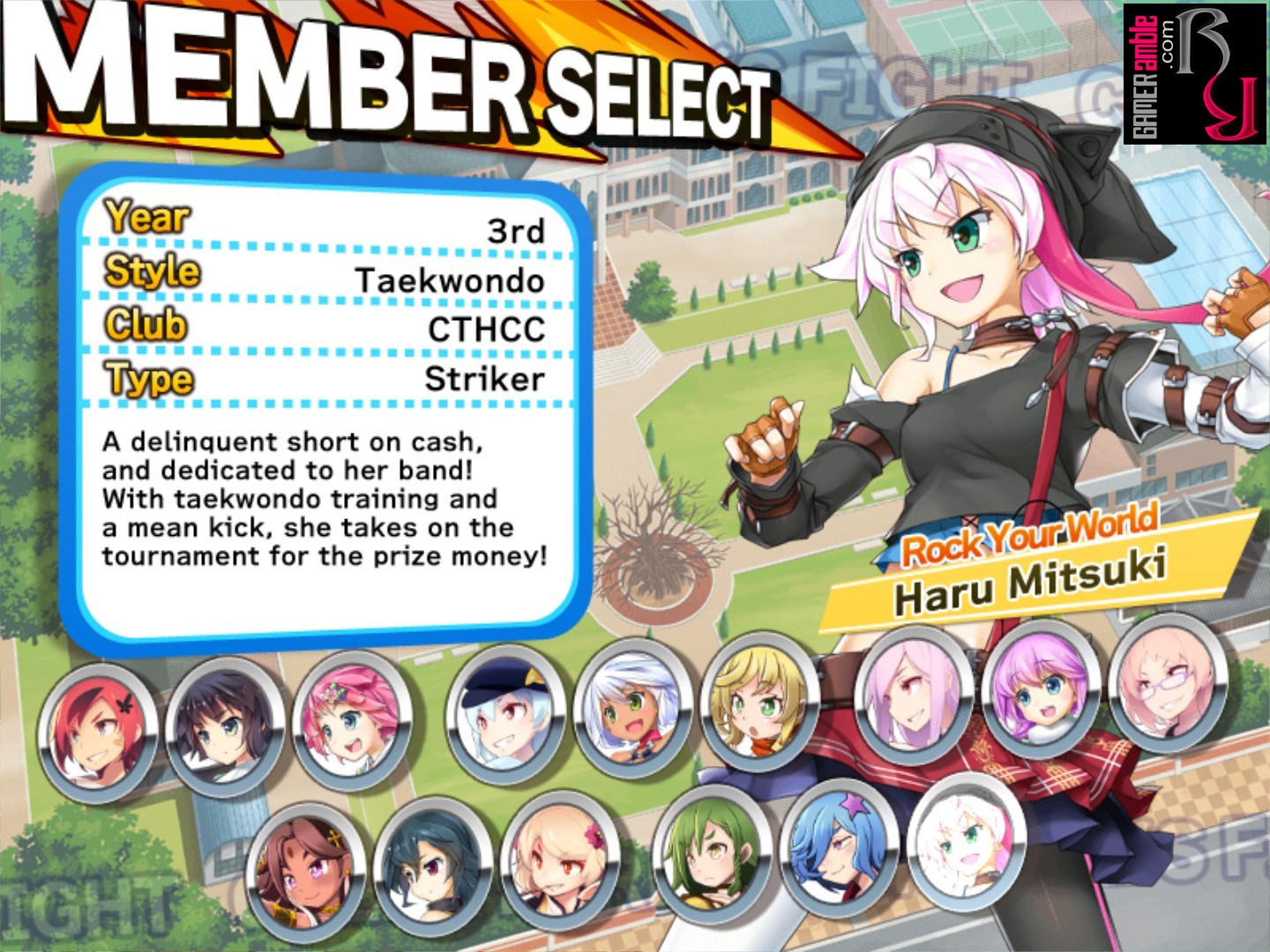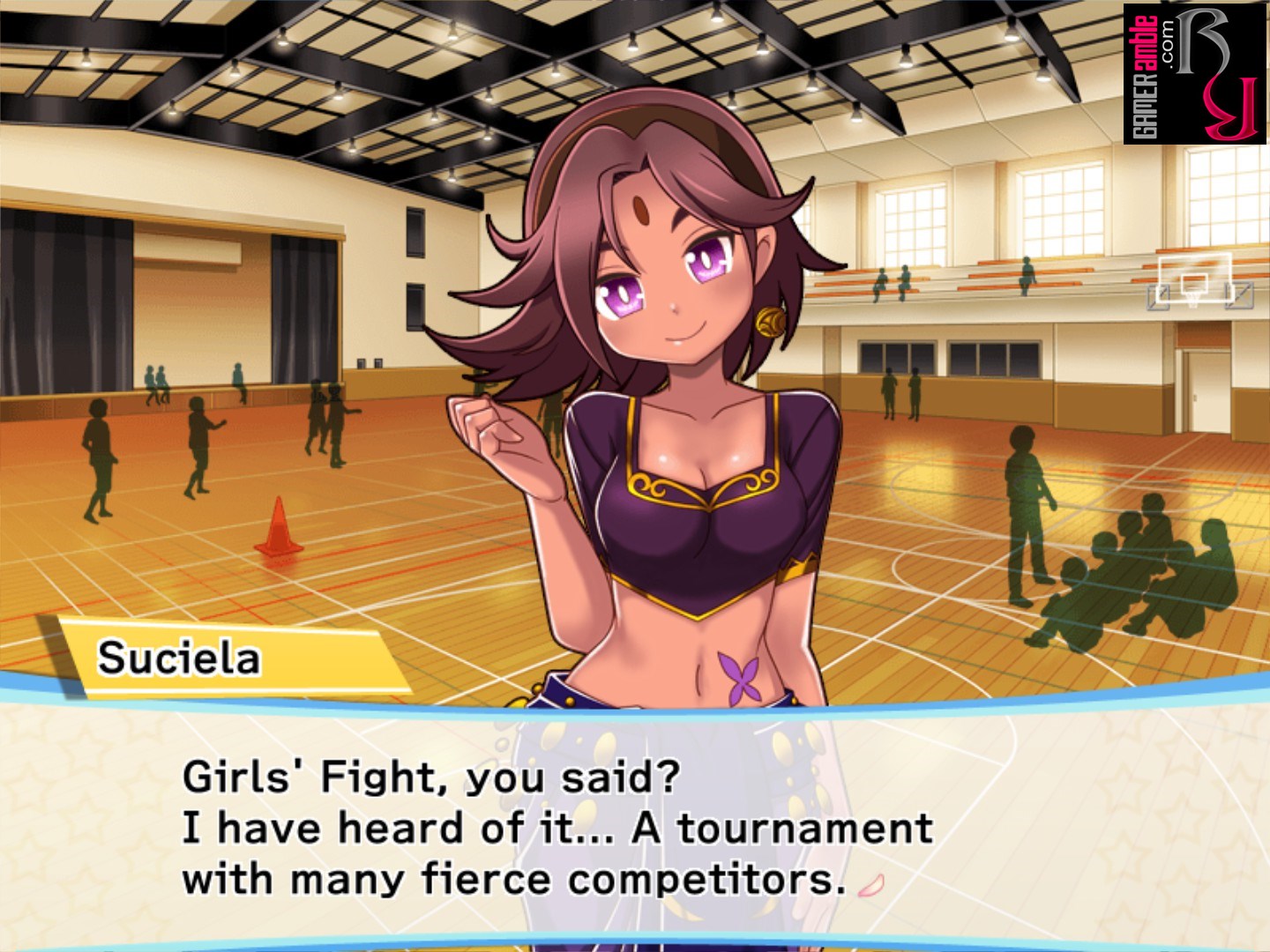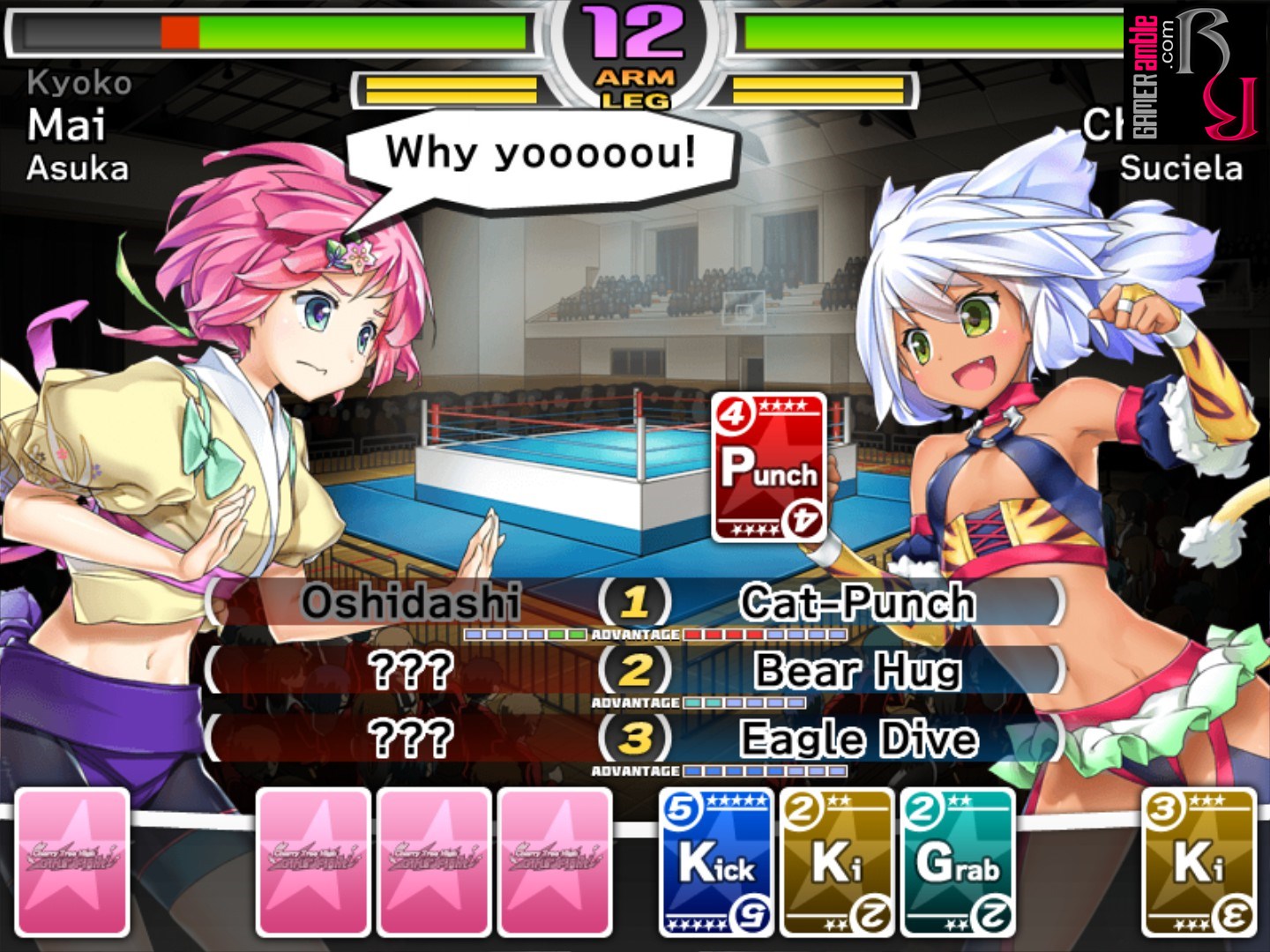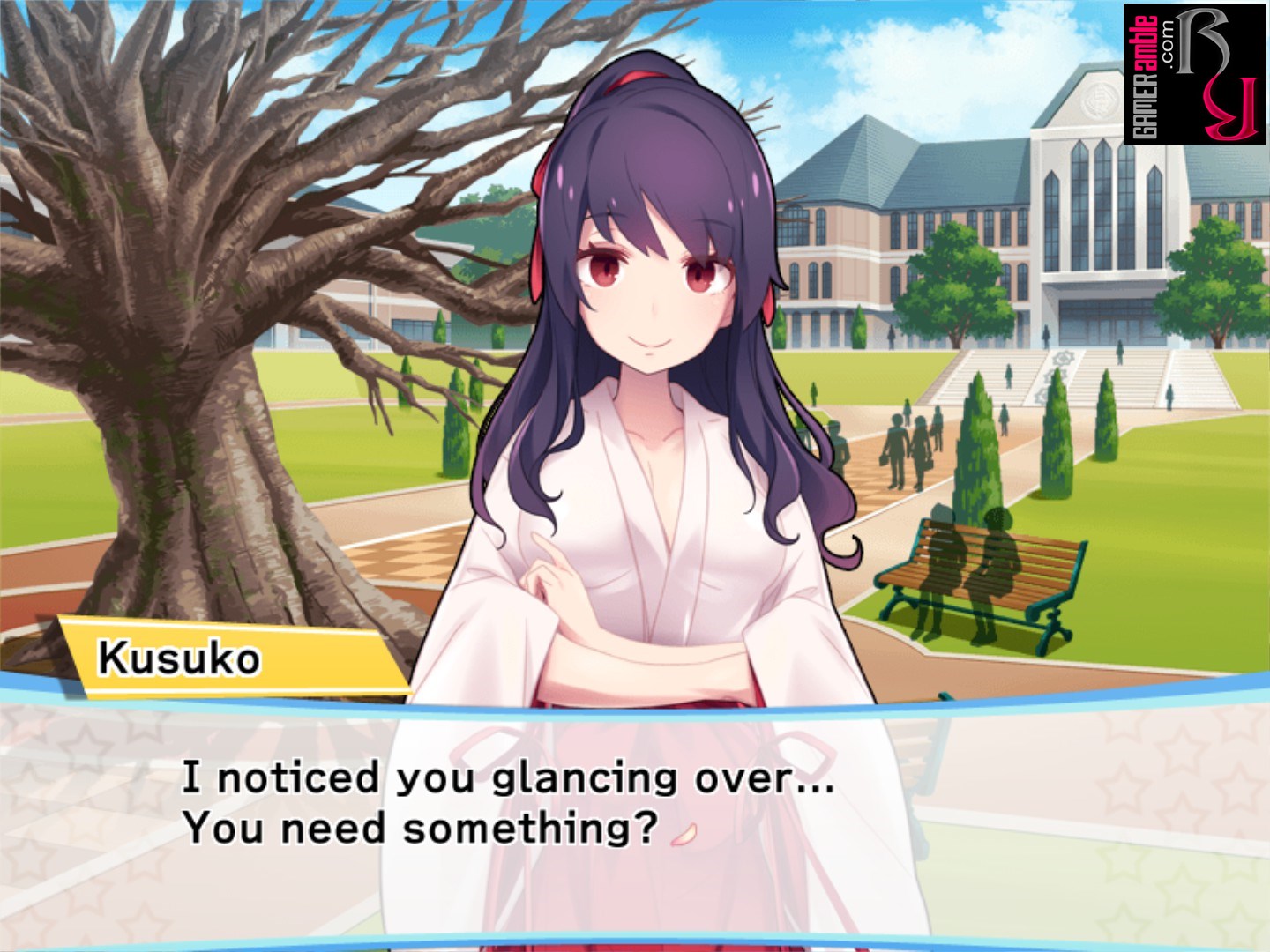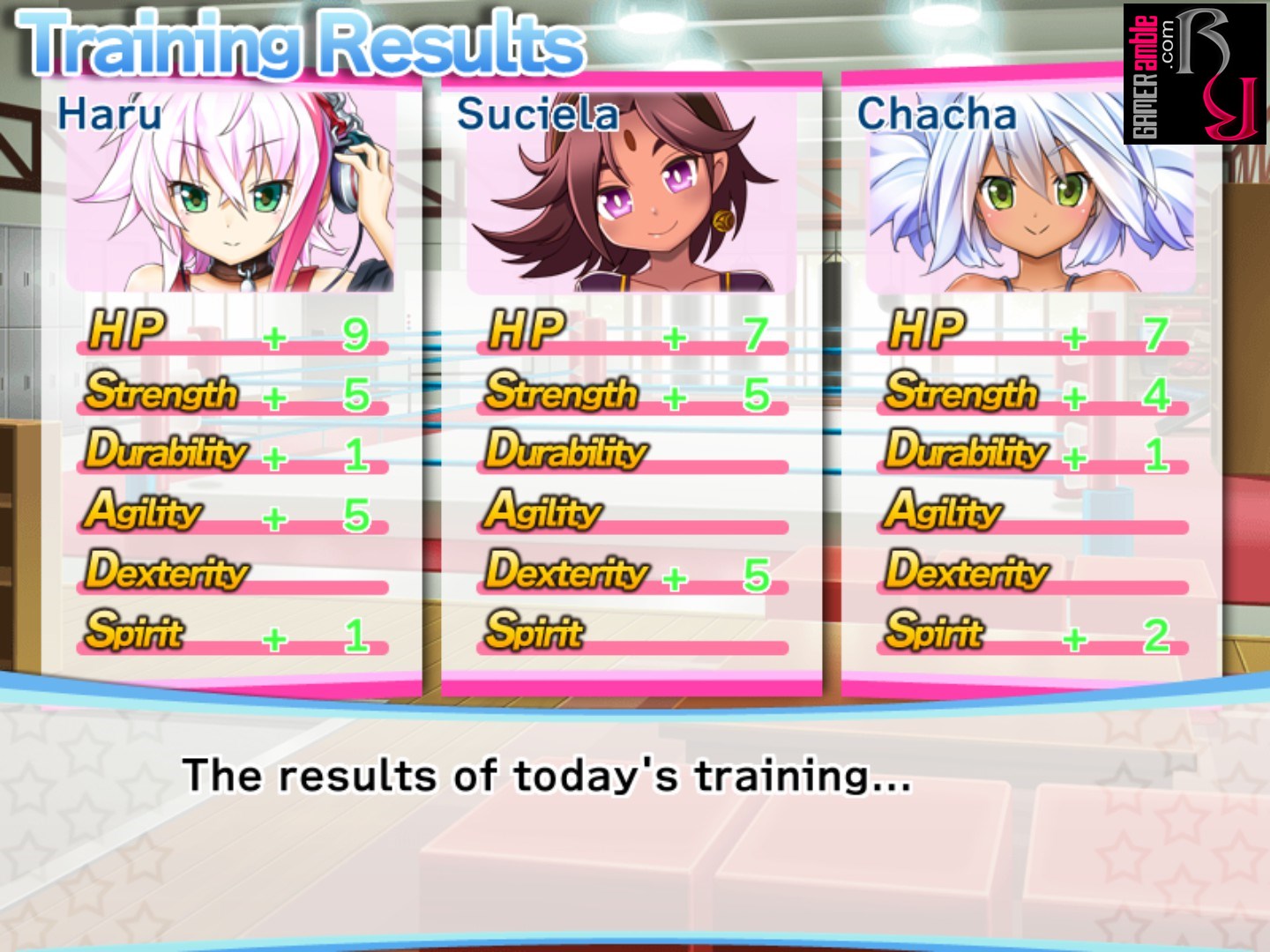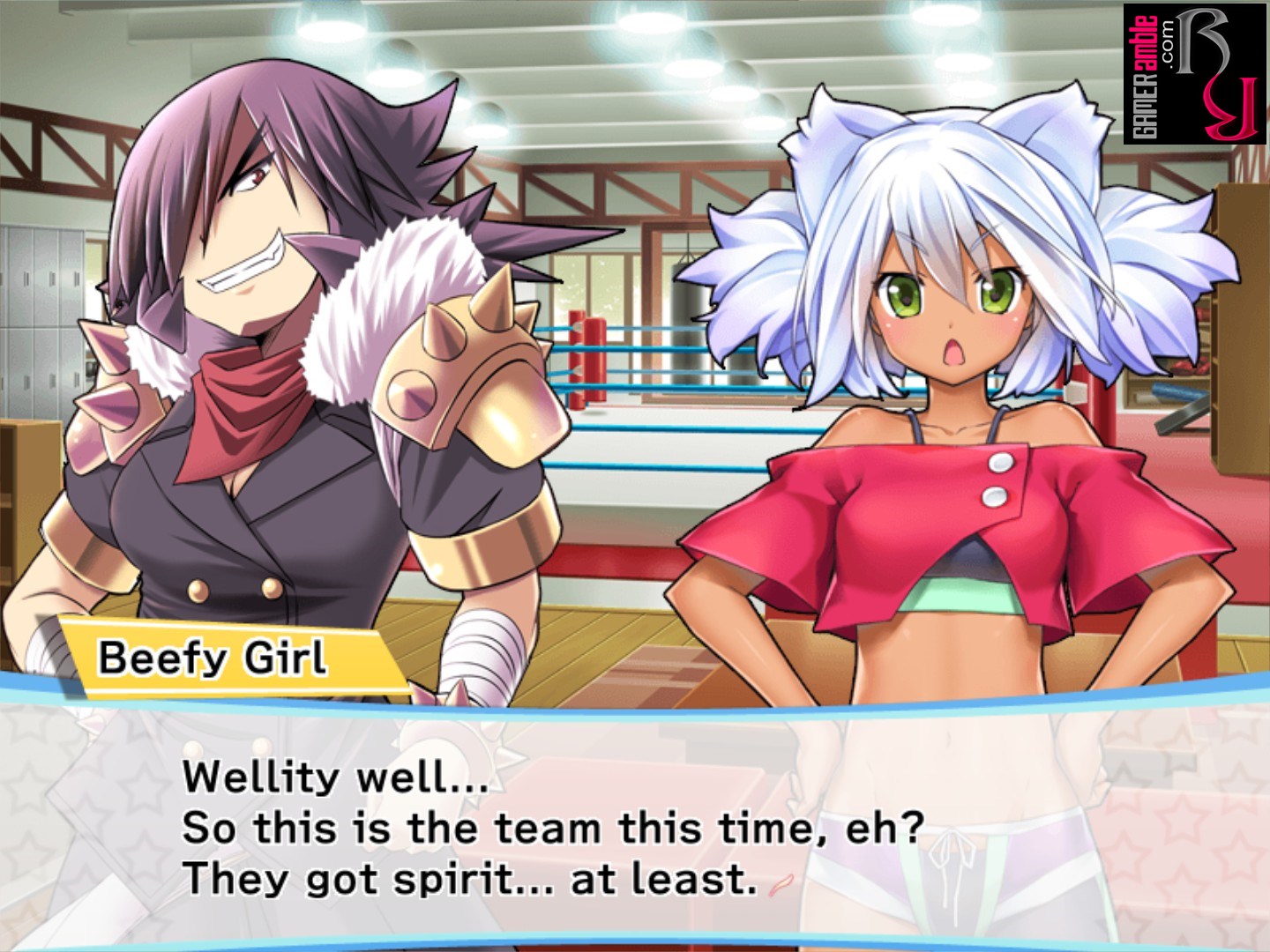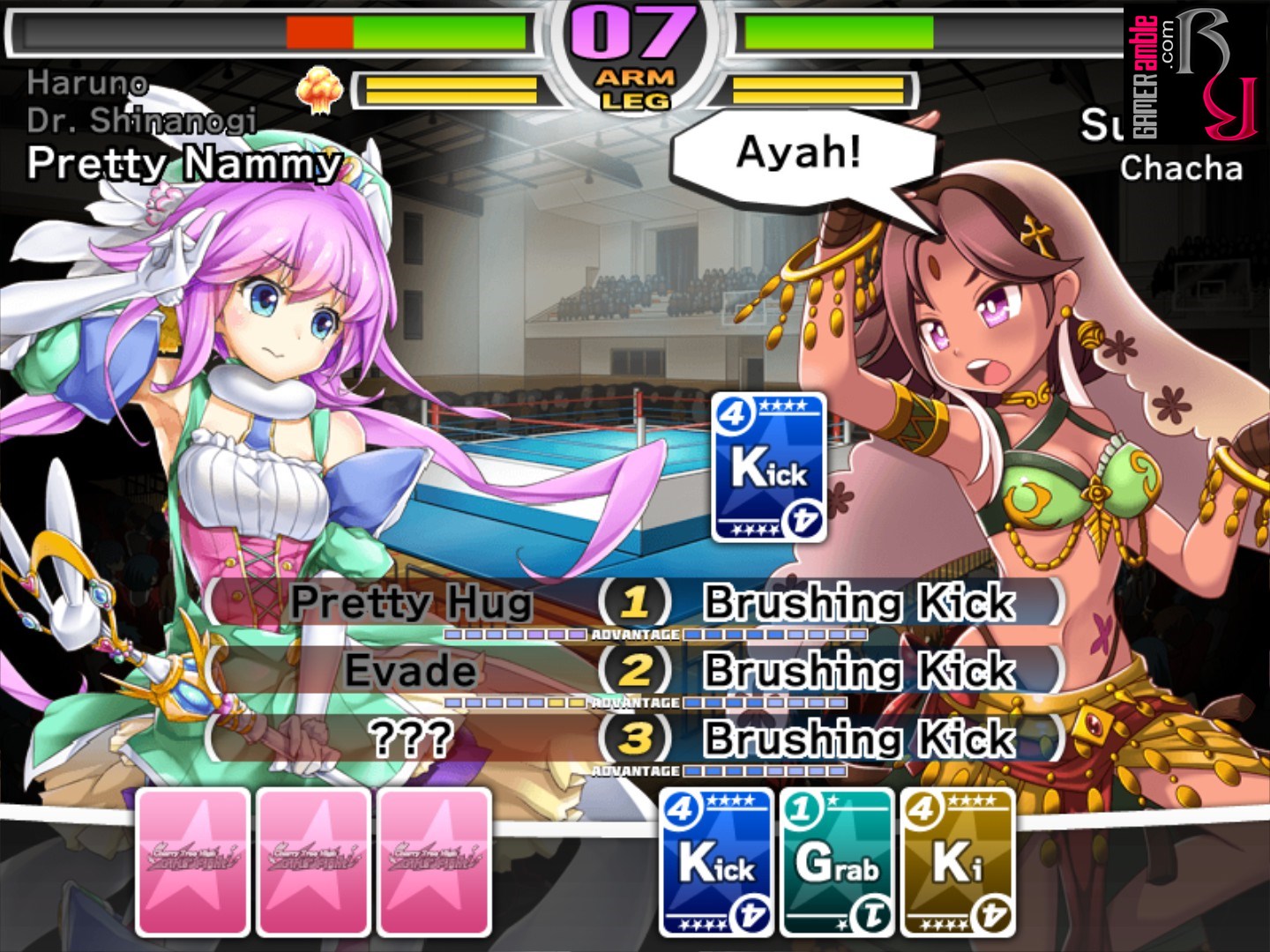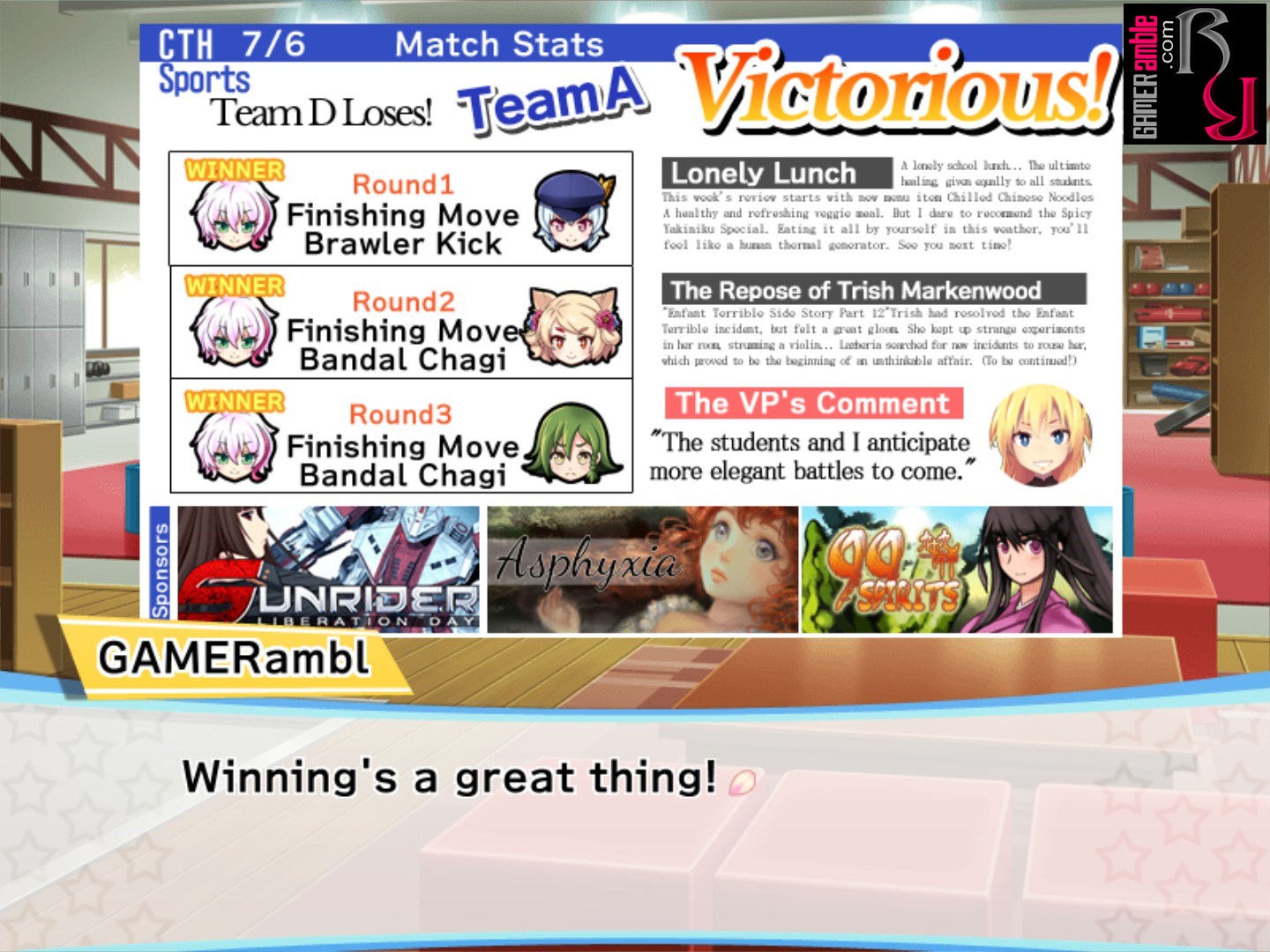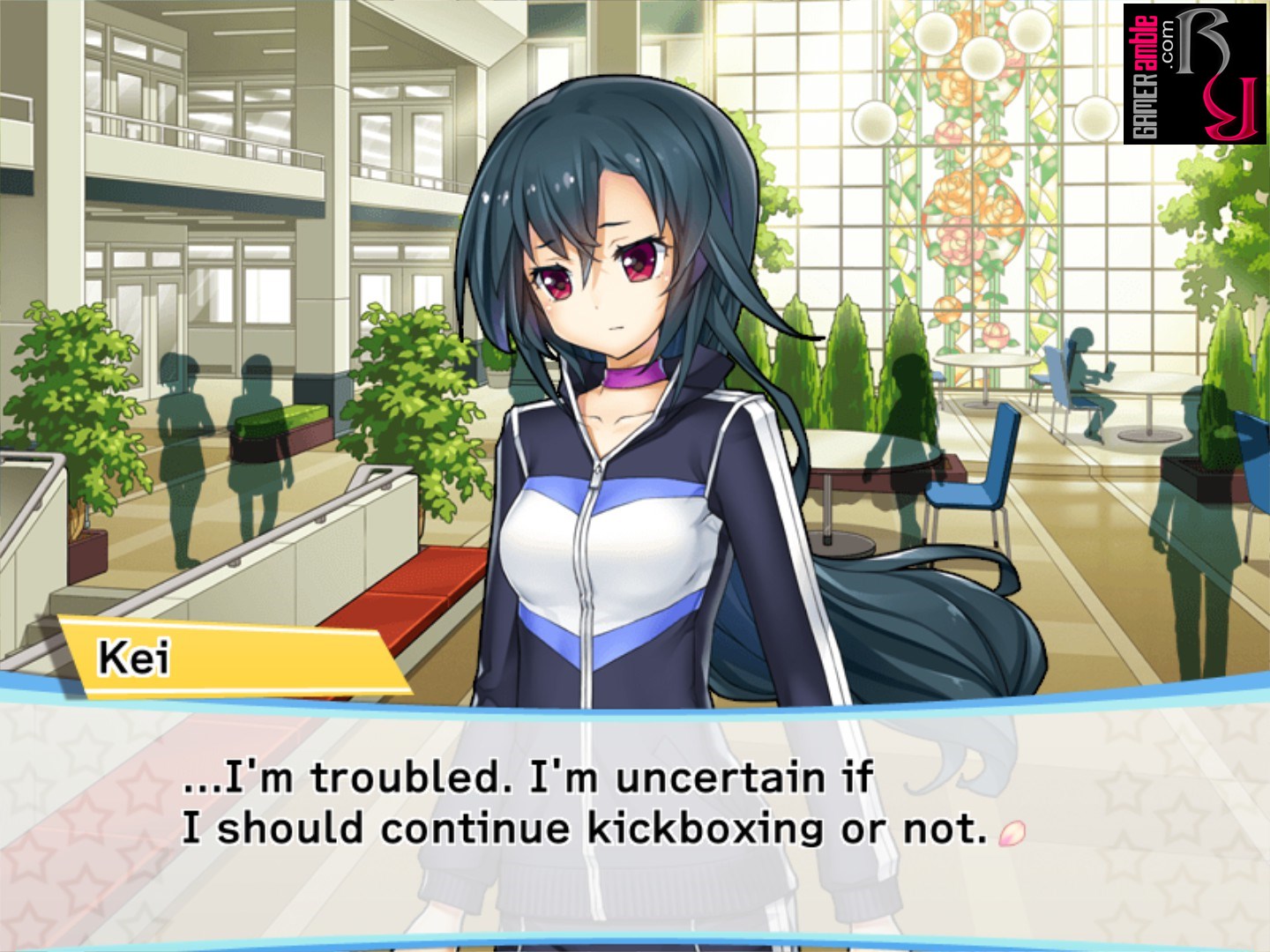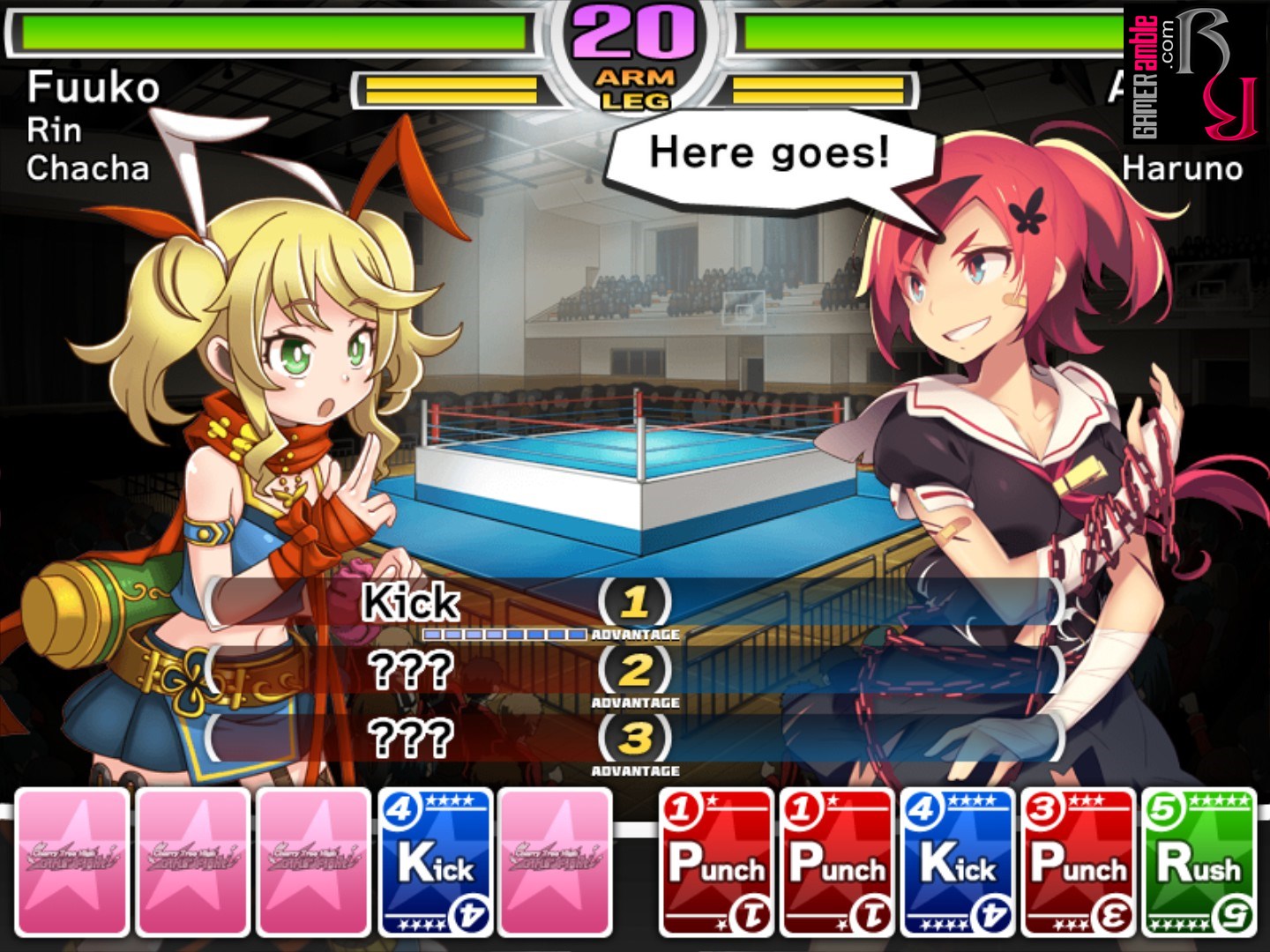Cherry Tree High Girls’ Fight
Developer: 773 | Publisher: Sekai Project | Release Date: 2014 | Genre: Indie / Simulation / Sports | Website: Official Website | Purchase: Steam
After two visual novels featuring the school comedy club things get a bit more serious at Cherry Tree High with the announcement of a fighting tournament. You step into the role of a new coach at the school, tasked with training three girls to become elite fighters. With one season to whip the girls into shape and a new fight every Friday do you have what it takes to lead your team to victory?
Despite what the name says, Cherry Tree High Girl’s Fight isn’t actually a fighting game, at least not in the traditional sense. The game uses a turn-based card battle system for fights, so anyone expecting something along the lines of BlazBlue or Guilty Gear are in for a disappointment. Matches are three versus three and you get to pick the fighting order of your all girl team. Your character receives five random cards per round from which you must choose the three attacks they will employ. In addition to being divided in rank from one to five, cards are also categorized by type, such as punch, kick, throw, grab, rush and Ki. From these move types you can then select a specific type of move, provided your character has learned it during training. At the end of your selection the cards are matched against the ones chosen by your opponent and the outcome is decided based on the strength of the card and difficulty of the move. Since not all the girls are proficient in all the moves there is a fair bit of luck involved in battles.
When a girl loses all her health she is knocked out and the next fighter is tagged in to continue the battle against the victor. This then continues until the preset amount of rounds are up or all the girls on a team are knocked out. There are other factors that come into play during fights, such as status ailments and gauges for the arms and legs of girls, but overall the system is fairly simple. Reading the manual and checking out the tutorial is still recommended though to fully understand what is going on.
Fights only take place on Fridays, so from Mondays to Thursdays you get to focus on the girl raising element of the game. You are also provided with action points, which can be used to wander around the school in search of conversation topics or to talk to the girls on your team. Unfortunately, there are only four locations, the lounge, student gym, Everpink plaza and store to visit. You’ll also run into a lot of repeat conversations, but the topics they open up does carry over when you start a new game. This is great as it is impossible to unlock all the topics in a single playthrough. Although these topics don’t do much to further the plot, they do allow you to get to know the girls on your team better. Speaking of the plot, the one in Girls’ Fight is quite simple, but there is an interesting twist towards the end that explains what is really going on.
When training the girls you can choose three different activities for each of them per day. These range from jogging and lifting to calisthenics, meditating, and more, all of which are tied to certain stats. For example, increase a girls’ strength and she will be able to do more damage with her punches and kicks, while upping her dexterity allows for more damaging throws and grabs. Girls can also be instructed to learn new moves, but pay attention to their mood and give them some rest if they are not feeling so well.
The game features 15 different girls, two of which will be familiar to players of the previous games, and each of them has their own fighting style. Their abilities are based on their styles, so the wrestlers will be better throws and grabs while the boxers hit harder. Training girls in disciplines that correlate with their fighting styles will result in better gains, but you can also focus on bolstering their weaknesses instead. The game can be played on “Easy” or “Normal” mode, with a “Hard” difficulty unlocked after beating one of the other modes.
The 2D character artwork of the 15 girls look great and they all have their own unique styles. Unfortunately, the game doesn’t feature any animations to go with the high quality character art. Characters will change their facial expressions depending on their mood, but that is about the extent of it. We were hoping to see some cute chibi animations for the training exercises, but instead only a generic “now training” clip is played. This is probably because the game features such a large cast and creating custom animations for each of them would have been a huge undertaking, but the lack of animations does detract from the experience. The same goes for the actual fights as you get to pick all of these interesting sounding attacks, but none of them are actually shown. When the game was first released on Steam it was limited to a windowed resolution of 800×600, but a fullscreen mode has since been added along with the ability to resize the window.
The soundtrack is nice and upbeat, but sadly the game doesn’t feature any voice acting. The controls are very simple and everything is mouse driven. Left-click is used to select options or advance dialogue while right-click is for canceling. The only button needed on the keyboard is “Enter” which can be held down to skip dialogue. The latter is very useful for the campus conversations you’ve read before.
Overall Cherry Tree High Girls’ Fight is enjoyable and has plenty of charm, but the story isn’t exactly gripping. Because battles involve so much luck the gameplay can also be a little hit or miss. It is certainly not a bad game and makes for a novel experience, but will probably only appeal to a small demographic.
System Requirements
- OS: Microsoft Windows XP/Vista/7/8 (32 bit or 64 bit)
- Processor: 1.8 GHz Pentium 4
- Memory: 2 GB RAM
- Graphics: DirectX® 9 Compatible Graphics Card
- DirectX: Version 9.0c
- Storage: 600 MB available space
- Sound Card: DirectSound-compatible sound card


